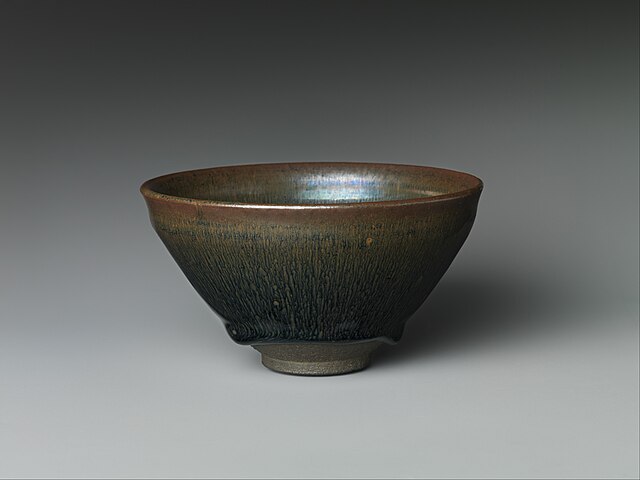Stoneware
vitreous or semi-vitreous ceramic made primarily from stoneware clay or non-refractory fire clay From Wikipedia, the free encyclopedia
Remove ads
Stoneware is a broad term for pottery or other ceramics fired at a relatively high temperature.[2][3] It may or may not be glazed.[4] It was developed after earthenware and before porcelain. Stoneware can be made from a much wider range of clays than porcelain.

Historically, reaching high temperatures was a big challenge. Lower temperatures were used for a long time. Earthenware can be fired as low as 600°C. This was done in primitive pit firing, but 800 °C (1,470 °F) to 1,100 °C (2,010 °F) was more typical.[5]
As a rough guide, modern earthenwares are normally fired in a kiln at temperatures in the range of about 1,000°C (1,830 °F) to 1,200 °C (2,190 °F); stonewares at between about 1,100 °C (2,010 °F) to 1,300 °C (2,370 °F); and porcelains at between about 1,200 °C (2,190 °F) to 1,400 °C (2,550 °F).
Remove ads
References
Wikiwand - on
Seamless Wikipedia browsing. On steroids.
Remove ads
